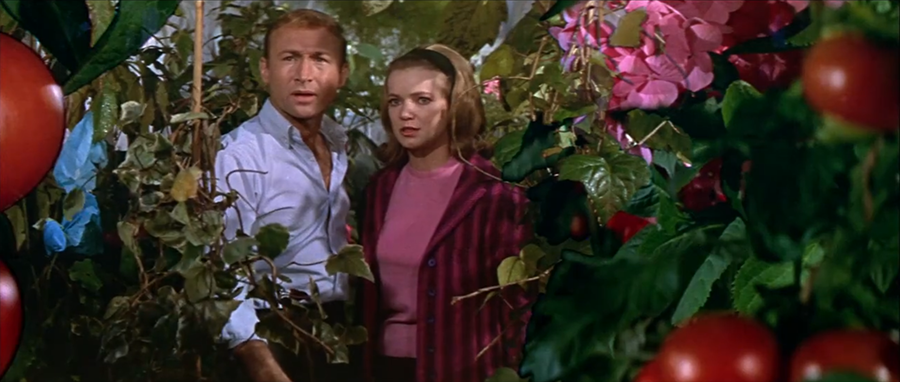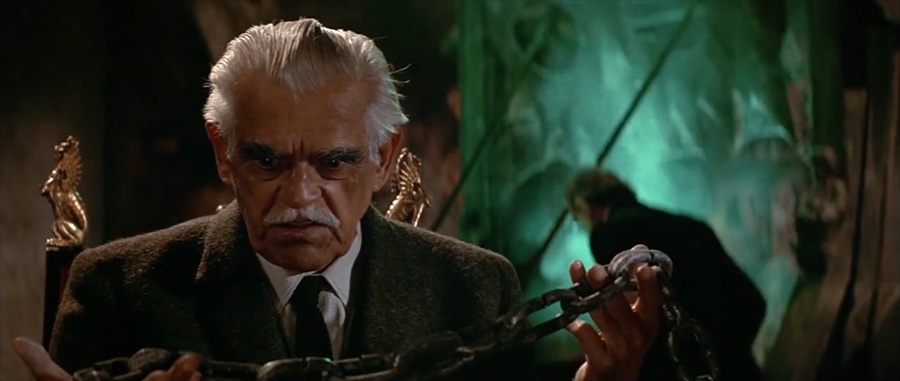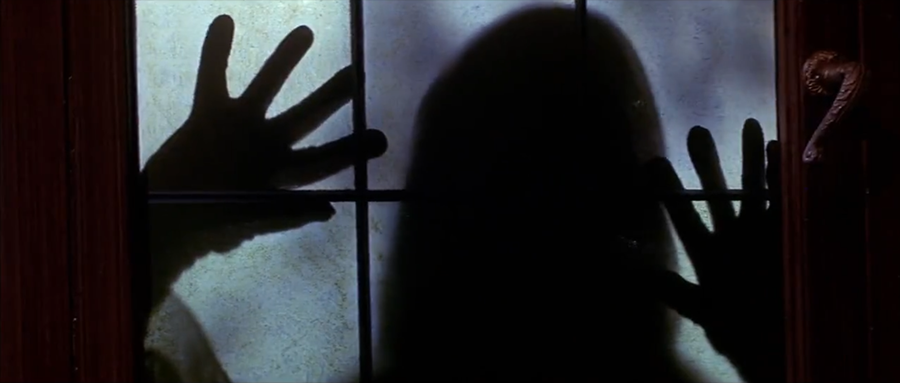DIE, MONSTER, DIE!
Directed by Daniel Haller. 1965. United Kingdom, United States.

H.P. Lovecraft’s The Colour Out of Space remains to this day one of my most read and most loved pieces of fiction. That’s why I don’t want to talk about it all that much. I wouldn’t want to spoil it for those of you who haven’t read it. It is, like most Lovecraft stories, not something one reads for the plot. Lovecraft’s stories are not exactly tightly woven narratives filled with varied and interesting characters. Had Lovecraft possessed a more common vernacular, I doubt he would be all that well remembered. No, what matters most in a Lovecraft story is the atmosphere he invokes. Were Lovecraft interested solely in plot, The Dunwich Horror wouldn’t open so slowly, with nearly the whole first chapter devoted to nothing but describing hillsides and roads, stone pillars and the bleak, desolate area known as the Devil’s Hop Yard.
Lovecraft’s impressively verbose writing style is his greatest stumbling block for new readers. Rarely do modern authors use so many words to describe something as simple as a house or a night sky. Lovecraft will sometimes drift down entire streams of consciousness, going off for paragraphs on accents, odors, historical anecdotes, and trivial details on lineages of families we never even meet. All of this is done to envelop the reader in the atmosphere of the towns, estates, and alien landscapes he would routinely set his stories in. Impatient readers will be driven as mad as the protagonists of his tales.
It’s enough to say that The Colour Out of Space tells the story of an unnamed surveyor from Boston who discovers the horrible history of a ruined track of land west of the Arkham Hills, a place the locals refer to as the blasted heath. Our protagonist learns that 50 years prior, a meteorite had crashed onto the land of a farmer named Nahum Gardner. The meteorite gave off a strange, indescribable glow in a color that did not exist within the visible spectrum. As time went on, the crops on the farm began to grow abnormally large but tasted foul. Eventually, all the plant life turned grey, and the farm animals started to mutate. Worse, Nahum’s wife and sons...
Well, that’s enough of that. As I said, I don’t want to ruin it for those of you who haven’t read it. And it’s honestly quite pointless to discuss it in any great length anyway, because although DIE, MONSTER, DIE! adapts The Colour Out of Space, it doesn’t adapt it in any faithful way. It’s not the only film to do this. David Keith’s 1987 film THE CURSE and The Lonesome Death of Jordy Verrill segment of George Romero’s CREEPSHOW, both take the general premise of Lovecraft’s story but little else. There have been more faithful adaptations made since then, but why bother reviewing those films when we can complain about this one?

DIE, MONSTER, DIE! opens with the AIP logo, and that’s appropriate as this feels far more like one of their 1960s Edgar Allan Poe adaptations than it does a Lovecraft film. The Gardner farm is now the Witley estate, a creepy old mansion located in the English city (!) of Arkham. Part of me feels this is a reference to the old Whately family in The Dunwich Horror, another Lovecraft story director Daniel Haller would adapt during his career. Our lead is no longer a surveyor, but a scientist named Stephen Reinhart. Stephen has just arrived in Arkham, and although he is dying to visit his fiancée, Susan, no one will tell him how to get to the Witley estate or even rent him a bicycle. He has to make the trip on foot.
When Stephen arrives at the estate, he is greeted by Nahum Witley, the wheelchair-bound patriarch of the family. He is not happy to have an outsider in his home, even though this American intruder will one day be his son-in-law. Susan is positively delighted to see her fiancé, and surprisingly, so is her mother, the bedridden Letitia. You see, it was Letitia who summoned Stephen to England. She wants Stephen to take her daughter away, although she won’t go into details about why. She does, however, tell him all about the maid who went ill right before going missing.
The family butler collapses at dinner and dies overnight. Purplexed by Nahum’s standoffish attitude and refusal to allow Stephen to help with the butler’s burial, Stephen sneaks into the butler’s room at night, discovering nothing but a bloodstained sheet with a strange, ashen impression of a human form, almost as if the butler had rotted into the cloth. Would it have anything to do with the strange metal container in the basement? The one that is giving off a weird green glow?
A mysterious figure roams the grounds around the estate. The foliage is brittle and rotten. Bizarre wailings can be heard throughout the house at night, and a strange green light emanates from the greenhouse. When Susan and Stephen investigate, they find the plants inside have grown to gigantic sizes. Behind a boarded-up door, they find mutant creatures. Susan is attacked by sentient plants that ooze green jelly when destroyed. What has Nahum been doing on this estate? Why are there strange green rocks buried beneath the plants in the greenhouse? Why does Nahum own a tome called The Cult of the Outer Ones? What is the mysterious illness affecting Letita’s body and mind? Could this all be the result of Susan’s grandfather’s rumored dabblings in the occult?
So yeah, this has pretty much nothing in common with the source material outside of its underlying premise. Lovecraft’s story is science fiction, through and through. It is basically an alien invasion story. Here, the genre is muddled. The space rock is just a space rock. The Colour in Lovecraft’s story is both the form and the effect of whatever it is that crashed on the Gardner farm. Here, the green glow is basically just radiation. That’s all this is, space rock radiation.

And that’s fine, except it coexists with a whole strain of the film about occult worship. The room in the basement of the estate where the rock is kept is decorated in occult symbology. The grimoire Stephen finds mentions the Outer Ones, but that turns out to be a total red herring. No, there are no Outer or Elder Gods at play here, no Ancient Ones, no Yog-Sothothery. It’s just a space rock spitting out green radiation everywhere. When it was discovered, it gave off enough radiation to cause everything to grow in abundance. Nahum’s experimentations were for the greater good. The consequences were just unexpected. In the end, all the mutations and dissolving bodies were from radiation poisoning, not from sentient and potentially malicious origins.
The fates of Susan’s mother and the missing maid recall the fates of Lovecraft’s characters, and signal a short-lived change of genres. The final third of the running time does lean into the horror quite a bit with chases aplenty. But this late-game infusion of energy can’t save the film from being a total bore. At just 80 minutes, DIE, MONSTER, DIE! drags and meanders far too often. It certainly doesn’t help that the film is basically a two-man show. Nahum and Stephen are the focal point of every single scene, with poor Susan just being told to “wait here” over and over again. When the film finally brings her into the story, it’s just to be chased around until Stephen can come to her rescue.
In the roles of Stephen and Nahum, Nick Adams (of INVASION OF THE ASTRO MONSTER and FRANKENSTEIN CONQUERS THE WORLD fame) and Boris Karloff, respectively, are quite good. I love Karloff as an actor, and while Adams looks 15 years too old for the role, his stubborn, loud energy provides the perfect counterbalance to Karloff’s secretive, quiet performance. They’re quite good together, but their interactions become very predictable very quickly. Suzan Farmer, on the other hand, is given fuck all to do. She’s an attractive, magnetic performer, but the character of Susan is either pathologically oblivious or incredibly stupid. Those are the only two options. I would have loved for her character to be the third point in a tense, dramatic triangle of wants and needs, but there’s just nothing to the character.
And there’s really not much to the movie as a whole. Like Lovecraft’s story, the film has a wonderful atmosphere, and it looks terrific for its meager budget. Unfortunately, there’s nothing else positive here outside of the performances. It’s all in service to a lame, confused, and unsatisfying narrative that either completely missed the point of Lovecraft’s story or knew that it had no hopes of capturing it on screen and therefore didn’t bother to try. The film runs 80 minutes. You can currently find audiobook readings of The Colour Out of Space on YouTube that take less than 90 minutes. There’s only one correct choice for how to spend your time, and this ain’t it.